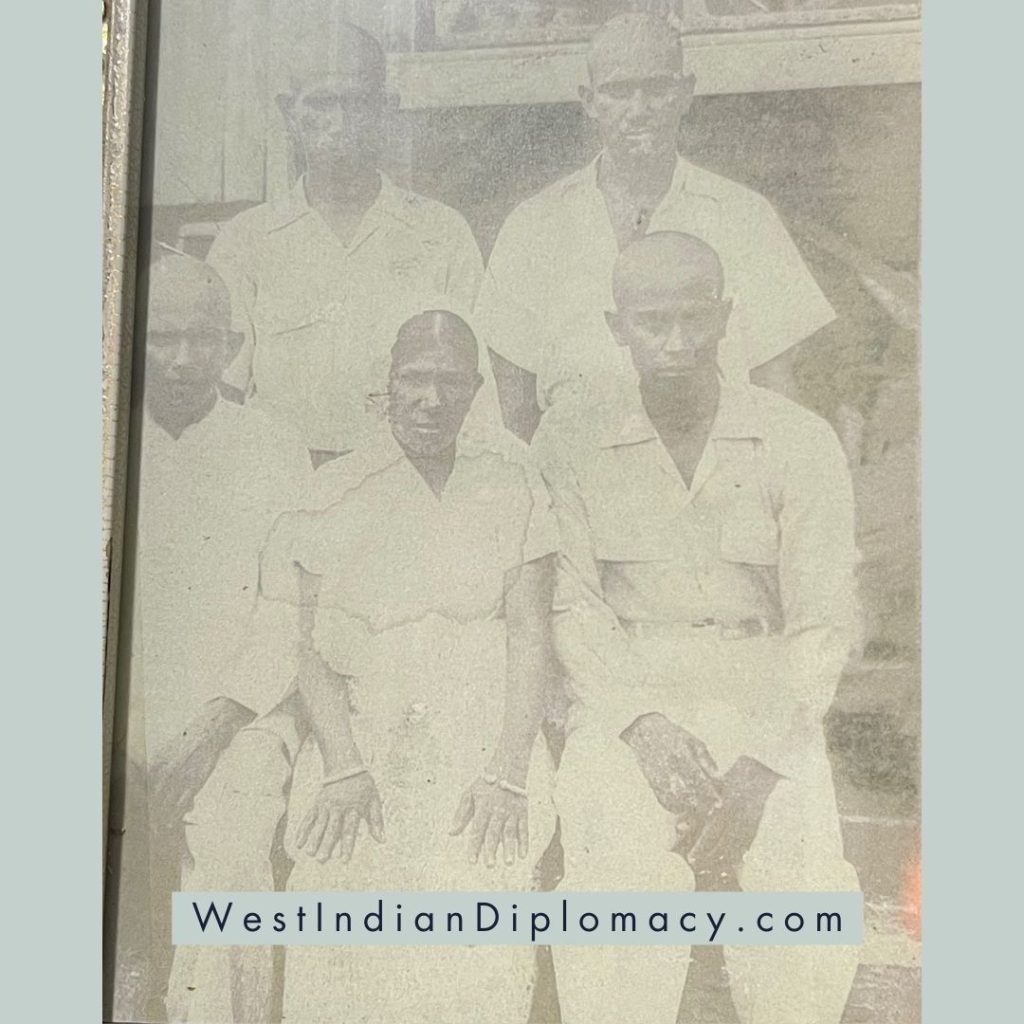Is Suriname part of Guyana?
This article is about whether Suriname is part of Guyana.

Is Suriname part of Guyana? For this family, yes. This picture shows 5 siblings who were born in Suriname. Their parents came to Suriname as Indian indentured servants.
Two of the brothers moved to Crabwood Creek, Guyana. Crabwood Creek is the last village in Guyana before the Suriname border.
Many of those in Suriname migrated to the Netherlands. Many from Guyana migrated to Canada and the U.S. I'm happy to report that they still keep in touch today despite living in Suriname, Guyana, the U.S., and Netherlands.
One brother (pictured above) that moved to Guyana initially lived in a tree for a few days before he got his home. He married a bold Guyanese woman who served as the village's midwife. They were one of the first people in Crabwood Creek to get electricity and shared their supply with neighbors.
I had the pleasure of knowing them for a few years because I married one of their grandsons. <3
For more about Suriname and Guyana, keep reading.
Understanding the Geographical Distinction: Is Suriname Part of Guyana?
The geographical boundaries and divisions between countries can sometimes be confusing, leading to misconceptions and questions about their political and territorial status. One such case is the relationship between Suriname and Guyana. In this blog post, we will delve into the historical, political, and geographical aspects to clarify whether Suriname is part of Guyana or if they are distinct nations.
Suriname and Guyana are neighboring countries located on the northeastern coast of South America. They both share borders with Brazil to the south, but they have distinct territorial boundaries. Suriname is situated to the east of Guyana, with the Atlantic Ocean forming its northern border and Guyana forming its western border.
During the colonial era, both Suriname and Guyana were under the control of European powers. Suriname was a Dutch colony, while Guyana was a British colony. These distinct colonial histories played a significant role in shaping their current political structures.
Suriname gained its independence from the Netherlands on November 25, 1975, becoming a sovereign nation. In contrast, Guyana achieved independence from Britain on May 26, 1966. Since gaining independence, Suriname and Guyana have pursued their own political paths and are recognized as separate countries by the international community.
The official language of Suriname is Dutch, reflecting its colonial history, while Guyana's official language is English. Additionally, Suriname has a diverse cultural makeup, with influences from its indigenous population, enslaved Africans, and Indian and Javanese indentured laborers. Guyana is similarly diverse, with a mixture of Afro-Guyanese, Indo-Guyanese, and indigenous cultures.
It's important to note that Suriname and Guyana have been involved in a territorial dispute over a region known as the "Corentyne River" or "New River Triangle." This dispute arises from conflicting historical claims inherited from their colonial past. However, this territorial disagreement does not imply that Suriname is part of Guyana or vice versa. They remain separate sovereign nations.
While Suriname and Guyana are neighboring countries with shared historical influences and a territorial dispute, they are distinct nations with separate political structures, borders, and international recognition. Suriname gained independence from the Netherlands, while Guyana achieved independence from Britain. Therefore, it is incorrect to claim that Suriname is part of Guyana. Understanding these distinctions helps us appreciate the uniqueness of each nation and foster a clearer comprehension of their geopolitical landscape.
This article was about whether Suriname is part of Guyana.
By Melissa Ramnauth, Esq. | This content is copyright of West Indian Diplomacy, LLC and may not be reproduced without permission.

She runs West Indian Diplomacy, a Caribbean blog aimed at promoting West Indian history and business in the global marketplace. Melissa has been an attorney for over 10 years. She currently focuses on trademark registration, trademark searches, and office actions. She also has extensive legal experience in the areas of trademarks, copyrights, contracts, and business formations. She owns her own Trademark Law Firm that is virtually based out of Fort Lauderdale.
Please Sign Our
Petition to Preserve Our Ship Records
By Submitting this Form
This page may contain affiliate links and ads at no extra charge to you. If you purchase something from these links and ads, West Indian Diplomacy may earn a small commission that goes towards maintaining the website and sharing our history.
Book Recommendations
The First East Indians to Trinidad: Captain Cubitt Sparkhall Rundle and the Fatel Rozack
History of the People of Trinidad and Tobago
An Introduction to the History of Trinidad and Tobago
Disclaimer: This post is for informational purposes only and does not constitute legal advice. Please see our Terms & Conditions and Privacy Policy for more information regarding use of this site. All information is true and accurate to the best of our knowledge. The information on West Indian Diplomacy is “as is.” We make no representations or warranties, express or implied, with respect to the content provided on this website or on any third-party website which may be accessed by a link from this Web site, including any representations or warranties as to accuracy, timeliness, or completeness. West Indian Diplomacy will not be liable for any losses, injuries, or damages from the display or use of this information.